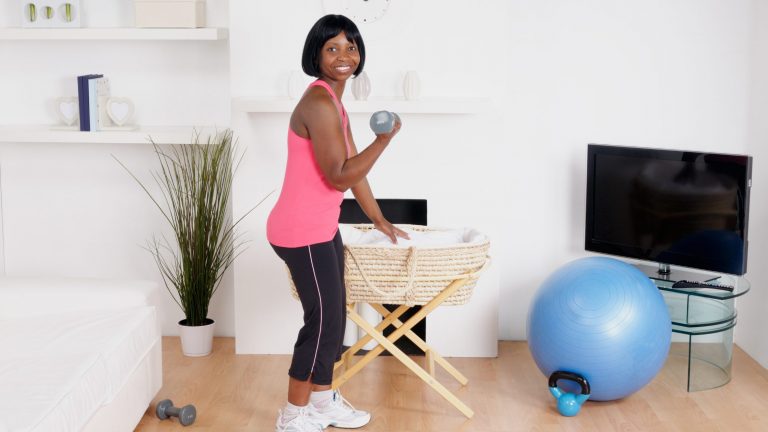
Basics of Core Strengthening in 4th Trimester
“How do I get back to my pre baby size” is undoubtedly the most common question we get from new mums and the answer, unfortunately, we don’t know.
There are so many factors that come into play as to when your body is ready to start training harder again. There is a massive stage of rest and recovery that you need to take after giving birth.
Those factors are things like, what did you do before getting pregnant, how active were you through pregnancy, did you have any complications, did you give birth vaginally or by c-section, do you have diastasis. The list goes on.
The good news is that we do have lots of basics, some of which are listed below, that you can start working on now to ensure your core is bulletproofed. Ready to go when the time is right for you to get back into your old training regime.
Although the following tips will be suitable for most mums after giving birth, our top tip is to go and see a women’s health physio. They are worth their weight in gold. They can provide checks on your pelvic floor to see how well it’s functioning, if there is any internal damage. They can check your core regarding diastasis and how well it can cope with tension. All of which are important when getting back to core strengthening.
1) Breathing
One of the most underrated exercises for core function is breathing correctly. While pregnant your posture gets shifted around and the supporting muscles either get stretched or tighter to accommodate baby. And these don’t just go back to normal once the baby comes along unfortunately. Take the time to focus on breathing to fully expand the lungs. Getting deep breaths that stretch out the ribs and allow the tummy to raise, this will also help improve the pelvic floor function too. As when you inhale fully it will press and stretch the pelvic floor down. This then enables you to perform your kegels as you exhale and empty the lungs of air. The best way to practise and monitor your breathing is to get your other half to watch as you lie down in a sit up position. Usually you will get either booby breathing or belly breathing. Booby breathing is where just the chest raises and the tummy stays pretty still. Or belly breathing is the opposite where the tummy expands lots but the chest stays really still. With both of these the breaths are usually pretty shallow as the tight muscles cannot expand fully. See how you are breathing and then try to focus on getting both the tummy and the chest moving and expanding with your breaths.
2) Pallof press
A great exercise to provide core stability without the downward pressure of a plank. Using a resistance band, tie it around something stable at chest height. Stand side on to the band with your hands in line with the middle of the chest. The idea is to extend the arms while keeping the hips and core facing forward, resisting the band that will be trying to pull you to the side.
3) Glute bridge
Laying on the floor, tuck both feet in towards your glutes. Lift the hips and bum up, squeezing the glutes at the top of the move. This is a great one to help strengthen the lower back and supporting muscles. This can be made harder either by moving to a single leg glute bridge or an elevated one where your feet are on a raised surface like a chair or some steps.
4) Farmer walk
For this you will either need dumbbells or some big water bottles in each hand. Standing up right, keeping the posture up tall, you want to walk a set distance and back. Do this while focusing on staying upright and not slouching with your posture. To move this forward you can change it to a suitcase carry, which is the same movement but with a weight in only one hand. This will mean the core needs to do more work to stay upright.
5) Basic body weight strengthening work
This is providing you have had no complications, wounds have healed, there is no problem regarding diastasis or prolapse. If your body is ready to start going again, please do not rush this stage as it can really set you back. But exercises like squats, lunges, wall press ups and resistance band rows can start to help the core to strengthen up.
You may well be more than ready to push harder but obviously, we haven’t screened you. So we recommend you seek clarity from either a women’s health physio or a pre and postnatal PT, as without checking you personally we cannot say what other exercises would be suitable for you moving forward.
Hopefully, the first 4 give you a good place to start and I cannot stress this enough but don’t skip over the basics and rush back. We give our clients at least 3 months of recovery work before getting back into a full programme. Your body has done one hell of a job in creating your little one and your body needs love and time to recover fully.
It is hard enough trying to recover with the stress of looking after a newborn baby, especially for first-time mums. Along with your disrupted sleep, lack of good nutrition and hydration. You have the rest of your life to push your body with your training.
You only have now to enjoy these early stages so take it slow. Do the basics, do what you need to do to survive and know that further down the line you can really start to push your body with your training. Just get the fundamentals set to give yourself a strong base moving forward.
Ben is the head personal trainer at London Fitness Mamas, he has over 13 years experience working to simplify fitness and nutrition for mums and mums to be
Contact Details
www.londonfitnessmamas.com
www.Instagram.com/londonfitnessmamas
www.Facebook.com/londonfitnessmamas






